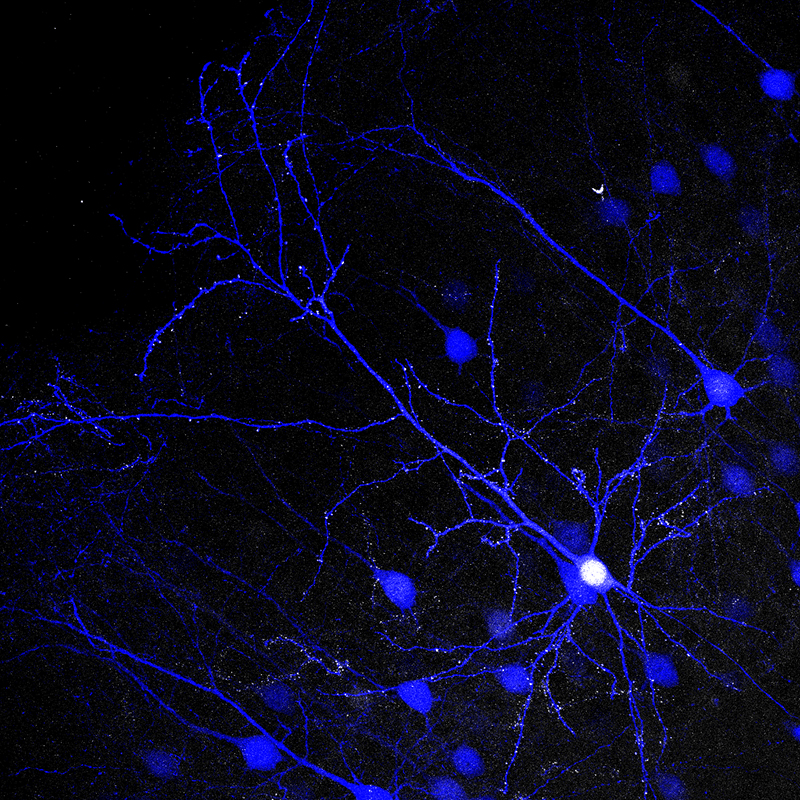Fossati Matteo
- Dettagli
- Visite: 5711

Research scientist
URT c/o Humanitas Research Hospital
Via Manzoni 56
20089 Rozzano
Tel +39 02 82245251
Fax +39 02 82245290
Questo indirizzo email è protetto dagli spambots. È necessario abilitare JavaScript per vederlo.
Cell biology of the synapse
Synapses are the elementary functional units of the brain ensuring information processing and storage in the brain. Their proper assembly and maturation are crucial to generate fully functional neuronal circuits. Indeed, impairment of these processes is thought to determine a wide spectrum of neurodevelopmental and psychiatric disorders, such as autism spectrum disorders, intellectual disability, and schizophrenia.
In particular, the fine orchestration of excitatory and inhibitory synaptogenesis is fundamental to set a balanced ratio between excitation (E) and inhibition (I) in the brain, a key parameter for correct brain development and function. However, our understanding of the molecular pathways that govern synaptogenesis and coordinate the formation of E and I synapses is still very limited.
My research activity is focused on 1) investigating the cellular and molecular mechanisms underlying synapse development in vivo and coordinating the E/I balance; 2) understanding how disease-linked genetic defects interfere with synaptogenesis and synapse function, leading to impaired neuronal connectivity.

To this aim, we are deploying several techniques ranging from single-cell manipulation of gene function in vivo (in utero electroporation combined with genome-editing techniques and AAV injections) to biochemical and super-resolution imaging approaches (STED, Stimulated Emission Depletion microscopy).
In conclusion, the main goal of my research is to identify fundamental principles of synaptogenesis and provide new insights into the molecular pathogenesis of neurodevelopmental disorders
Selected publications
Fossati M., Charrier C. Trans-synaptic interactions of ionotropic glutamate receptors. 2021 Curr. Opin. Neurobiol. 66:85-92. doi: 10.1016/j.conb.2020.09.001
Folci A., Mirabella F., Fossati M. Ubiquitin and ubiquitin-like proteins in the critical equilibrium between synapse physiology and intellectual disability. 2020 eNeuro 7 (4) doi: 10.1523/ENEURO.0137-20.2020
Fossati M, Assendorp A, Gemin O, Colasse S, Dingli F, Arras G, Loew D, Charrier C. “Trans-synaptic signaling through the glutamate receptor delta-1 mediates inhibitory synapse formation in cortical pyramidal neurons” 2019 Neuron 104 (6): 1081-1094e7 doi: 10.1016/j.neuron.2019.09.027.
Fossati M, Pizzarelli R, Schmidt ER, Kupferman JV, Stroebel D, Polleux F, Charrier C. “SRGAP2 and Its Human-Specific Paralog Co-Regulate the Development of Excitatory and Inhibitory Synapses” 2016 Neuron 91 (2): 356-369 doi: 10.1016/j.neuron.2016.06.013.
Fossati M., Colombo S.F. and Borgese N. “A positive signal prevents secretory membrane cargo from recycling between the Golgi and the ER” 2014 EMBO J. Sep17;33(18):2080-97 doi: 10.15252/embj.201488367.











